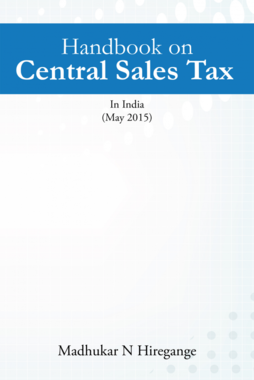
Book Description
Central Sales Tax (CST) is levied on the interstate sale of goods. CST is one of the oldest tax levies and has been around since 1957. This law is by the Central Government but the administration is by the States.CST levy is set at local rates. The revenue neutral rates which apply to most commodities in States goes up to 15%. The lower rate of 2% is available against Form C which can be issued by specified persons (resellers, manufacturers, processors etc) and cannot be issued by consumers.The State VAT laws have been in place since 2003. The payment of tax, filing of returns, assessment, reassessment etc under CST are all as per the local VAT laws which are ever changing and quite draconian. The quality of the administrators in general also leaves a lot to be desired. There are many disputes and demands for differential taxes from VAT departments in most states for wrong issuance of C Form in situations where goods were not permitted to be procured against Form C. GST would be in place by April 2017 if all goes well. However, CST law is expected to continue as a parallel levy at 1% after 1st April 2017 for a couple of years. This could lead to CST continuing to be non-vattable even under GST regime and an add-on to costs incurred by the dealers.In this book we have covered important concepts, case laws and possible dispute areas along with resolution. The movement of goods on stock transfer basis, subsequent sale, sale in course of import and export are a few of the important areas where tax planning and savings are possible. The student who wishes to understand sales tax law could use this as a ready reference. This book contains practical tips for common issues faced by practitioners in this area as well. The probable impact of GST laws on concepts discussed is touched on in most chapters.